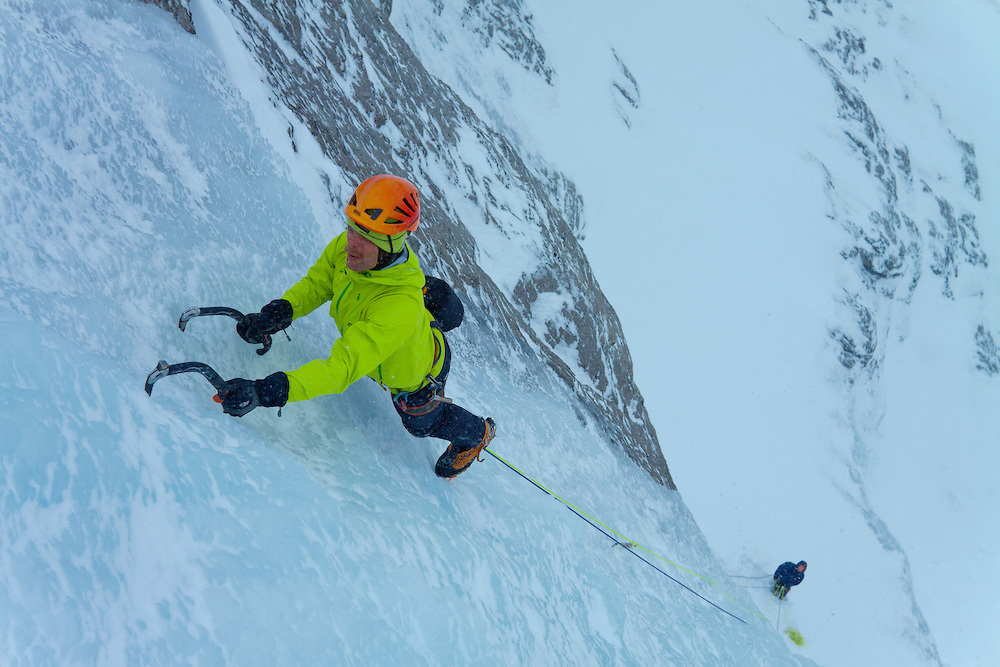Ice Climbing

Does the thought of chipping away at towering walls of ice in subzero temperatures excite you? On an ice climbing holiday, the challenges ahead of you can range from the mundane (a frozen, red nose) to the mind-boggling (avalanches and snowstorms). Ice climbing is an offshoot of mountaineering, with climbers using the same basic equipment, techniques, and safety measures, yet with a few more tools to help them scale vertical sheets of ice.
To be an ice climber, you need training, experience, control, and good judgment. You also need special tools such as crampons, ice axes, and ice screws. An ice climber digs the front points of his crampon into the ice. He rests his body weight on the crampon and swings his ax up. Once the ax is lodged firmly in the ice above him, he repeats this entire exercise and takes step after careful step.
Where to go?
The Himalayas throw up every kind of challenge that a climber could ask for. Uttaranchal and Manali in Himachal Pradesh are the hot spots. Zanskar, Ladakh, and Gulmarg in Jammu & Kashmir, Deo Tibba, Hanuman Tibba, Pir Pangal range, Dhauladhar ranges, and Manali in Himachal Pradesh are other popular destinations.
Top Places to go for Ice Climbing
» Zanskar, Jammu & Kashmir
» Ladakh, Jammu & Kashmir
» Gulmarg, Jammu & Kashmir
» Deo Tibba, Himachal Pradesh
» Hanuman Tibba, Himachal Pradesh
» Pir Pangal Range, Himachal Pradesh
» Dhauladhar Ranges, Himachal Pradesh
» Manali, Himachal Pradesh
» Darjeeling, West Bengal
» Sikkim Himalayas
What do you need to know?
As a sport, ice climbing is still evolving in India. When ice climbing, let your guide decide the route and allow him to initiate you. Balance, focus, and the right technique go a long way in making you a good ice climber.
Ice climbing is recognized by the Union Internationale Des Associations D’Alpinisme (UIAA) which conducts annual climbing competitions. (www.uiaa.ch).
What you must carry?
You will need ice tools and mountaineering boots. Ice tools should have reverse curve sharp picks, wrist loops, and hammer attachments. Mountaineering boots should be suitable for winter climbing. Wear non-cotton garments that are waterproof and offer insulation. Include three layers of insulation for your upper body, a synthetic parka, and two layers for your lower body. Gloves, mittens, hats, sunscreen, goggles, gaiters, and extra woolen or synthetic socks are very important. Carry water in insulated bottles. Avalanche beacons, shovels, crampons, long ice axes, helmets, harnesses, and ropes should be part of your gear.
Ice climbing: Do’s and Don’ts
1. Get good at doing threads in the ice for bailing or rappelling. Always have the materials and equipment to do them. Then you won’t have to rap off a skinny thread made in thick ice using a 13cm screw and backed up by an old stubby.
2. Extend any rap-anchor threads beyond the ice so your rope won’t get pinned down to the ice and freeze in. Do two threads and equalize or, at the minimum, back them up with a screw for the first person down. In really bad, wet, and freezing conditions, try not to let the rope stop moving once you start pulling it. Don’t let loops of rope drop down below so they can catch on icicles.
3. Headlamp, headlamp, headlamp. If nothing else, it will help you confirm that, yes, your ropes are frozen in up there.
4. Don’t just grab 2-3 screws and head up something somewhat hard, just because you think you already have it in the bag.
5. Never swing one tool near another. Apparently, wearing a pack on your back cushions the blow when you land on it as you hit the next bulge on Chouinards Gully.
6. Remember to stay calm when something unexpected happens, like if your tool head were to break off on the crux of Curtain Call and this was one of the few times you decided not to bring a third tool. Inspect your tools and screws every time before heading out. Anticipate when large chunks will fall off with one swing of the tool. It WILL happen.
7. Remember to finish the knot when tying in before leading Mindbender. Starting up the upper pillar is not the time to notice you forgot.
8. If you tie a knot in the rope ends for rappelling safety, remember to untie them. Always back up your rappels off a leg loop with a prussik or something similar.
9. Have a good partner and work out your communication on the ground before heading up. Make a plan of action at the belay, not just guessing what to do when the leader runs out of rope and you can’t hear each other.
10. If you must look up at your partner from your hiding place out of the line of falling ice danger, put your free hand in front of your face initially and look between fingers. This will reduce the number of stitches on your face.
Don’t compromise on the quality of climbing equipment and accessories.






